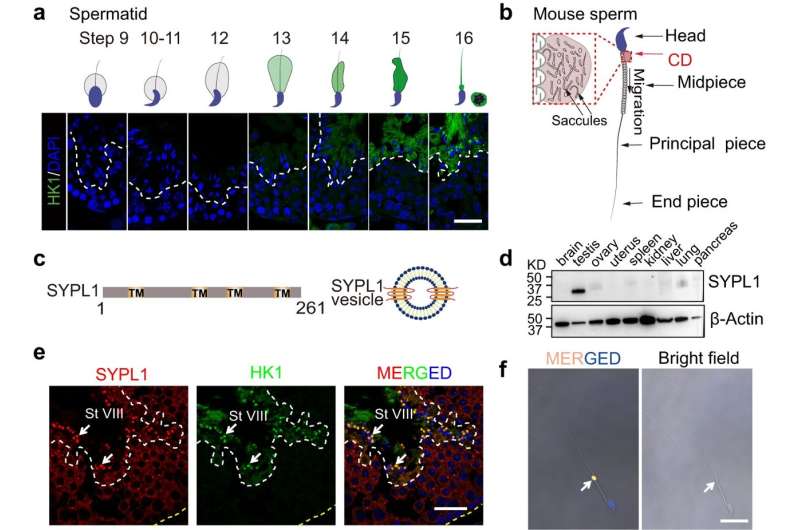This article has been reviewed according to Science X's editorial process and policies. Editors have highlighted the following attributes while ensuring the content's credibility:
fact-checked
peer-reviewed publication
trusted source
proofread
Study elucidates poorly understood sperm structure, providing insight on infertility

Michigan State University researchers have solved the mystery of a poorly understood sperm structure called the cytoplasmic droplet, or CD. The CD is an expanded cytoplasm—watery, gel-like cell contents enclosed by cell membrane—found close to the head, at the neck of the sperm, in all mammals, including humans. This new genetic model is the first of its kind.
Despite being first discovered more than 100 years ago, it's been unclear how the CD forms and what its function is due to the lack of molecular and genetic tools to study it.
Scientists have often disregarded it, but it can't be ignored anymore said Chen Chen, an associate professor in the Department of Animal Science and the Reproductive and Developmental Sciences Program in MSU's College of Agriculture and Natural Resources.
"Our new study using mice shows that the CD is indeed an actively forming organelle purposefully designed to regulate sperm maturation and fertility," Chen said. "It acts as a 'storage room' to pack up critical proteins needed for sperm function before its long journey to reach the egg. It's like packing for a trip to Mars—the spaceship needs to load up everything needed for the journey before leaving Earth."
Chen and his research team discovered a novel protein trafficking system within the developing sperm that actively transports essential proteins via small membrane vesicles to the CD—the sperm storage room. This process is controlled by a gene called SYPL1. The SYPL1 protein resides on these membrane vesicles and plays a pivotal role in directing them to reach the CD. You can think of these vesicles as cargo trucks delivering protein cargos to the sperm storage room, Chen said.
The study is published in the journal Nature Communications.
Chen noted that when the SYPL1 gene is deleted in mice, this protein trafficking system collapses, and critical metabolic enzymes and essential proteins fail to be shipped to the CD, resulting in an empty CD devoid of vesicles—something he had never seen before. Consequently, without major CD contents, mutant sperm lose their motility and ability to cope with osmotic changes—they bend, leading to infertility.
"I believe this study represents a breakthrough in understanding the CD formation and its potential function," Chen said. "At the cellular level, it helps us realize that there is a specialized protein trafficking system that actively transports cargos to the CD for future use by sperm for their journey to the egg.
"Fundamentally, this finding will change people's misconception about this mysterious sperm structure. It will open new avenues for research on the CD as a biomarker for fertility in humans and animals and, possibly, on targeting this novel pathway for fertility control."
More information: Jiali Liu et al, SYPL1 defines a vesicular pathway essential for sperm cytoplasmic droplet formation and male fertility, Nature Communications (2023). DOI: 10.1038/s41467-023-40862-1
Journal information: Nature Communications
Provided by Michigan State University




















